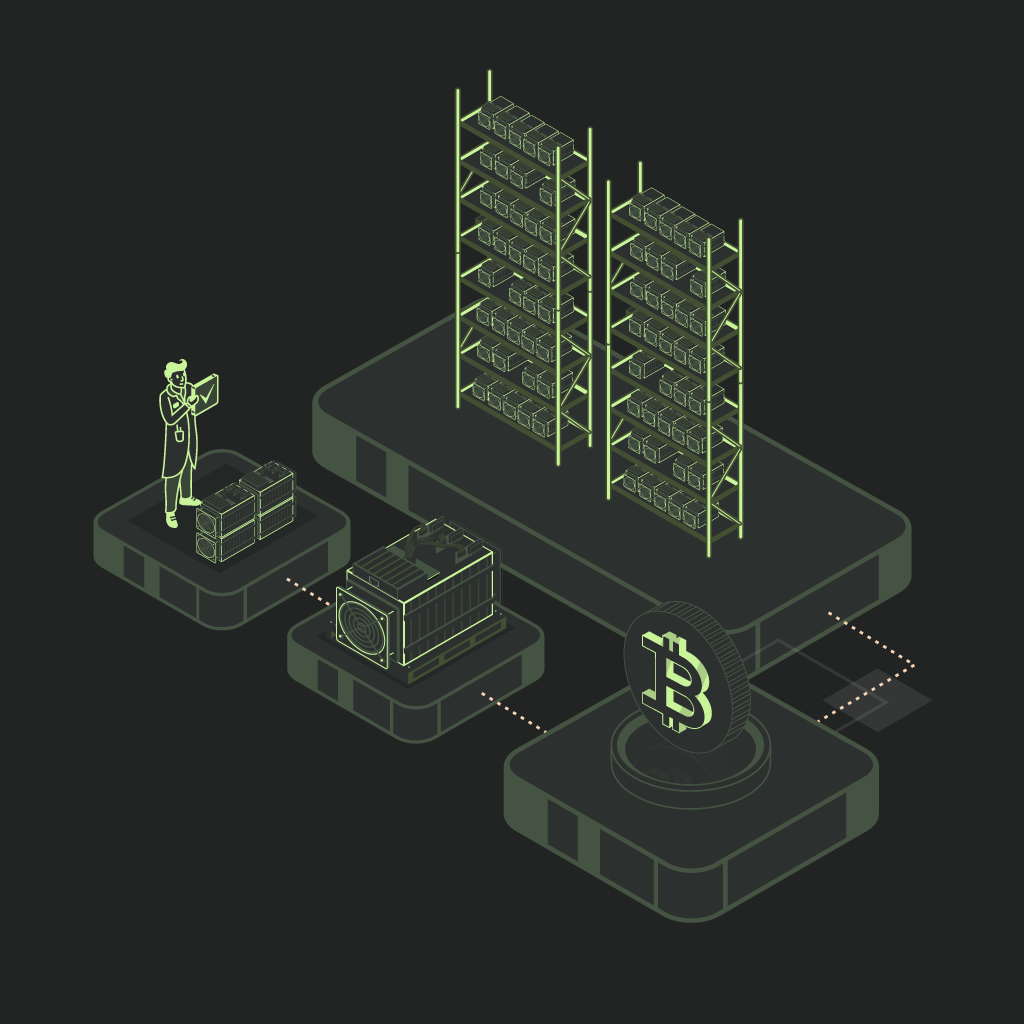The Rise of Demand Flexibility:
How Bitcoin Mining is Revolutionizing Grid Stability

Introduction
In the rapidly evolving energy landscape, the integration of renewable energy sources has brought both opportunities and challenges. As we strive for a cleaner, more sustainable future, the intermittent nature of wind and solar power has introduced new complexities to our electricity grids. This article explores the concept of demand flexibility and how innovative solutions, particularly Bitcoin mining, are helping to address these challenges.
The Challenges of Intermittent Energy

The increasing integration of renewable energy sources like wind and solar has led to greater volatility in electricity markets. This volatility manifests in several ways:
- Price fluctuations have become more pronounced. During periods of high renewable generation, electricity prices can plummet to very low or even negative levels. Conversely, when renewable generation is changing, prices can spike dramatically. These rapid and unpredictable price swings create challenges for both energy producers and consumers.
- Grid stability has become more challenging to maintain. The variable nature of renewables tests grid operators’ ability to maintain stable frequency and voltage levels, which are crucial for the reliable operation of our electrical systems.
- Curtailment issues have emerged as a significant concern. During periods of low demand, excess renewable generation often needs to be curtailed, reducing the economic efficiency of renewable projects and wasting potential clean energy.
The Solution: Demand Flexibility
To address these challenges, the concept of demand flexibility has gained traction. Demand flexibility refers to the ability of energy consumers to adjust their electricity usage in response to external signals. This can involve shifting energy consumption to different times, reducing overall usage, or even increasing consumption when there’s an abundance of renewable energy available.
See Also:
Demand flexibility offers several key benefits to the grid:
- Valley filling and peak shaving: Flexible loads can increase consumption during periods of high renewable generation and decrease during low generation, helping to balance supply and demand and flatten the curve.
- Providing Grid Balancing Services: Fast-responding flexible loads can help maintain grid frequency and stability, supporting the overall health of the electrical system at times of emergency.
- Improving Economics for renewables: By reducing curtailment, demand flexibility improves the economic viability of renewable energy projects, making them more attractive investments.
Types of Demand Flexibility
There are several programs employed by grid operators to encourage demand flexibility:
Time-of-Use Pricing: In regulated grids or utilities ToU pricing is one way to encourage consumers to shift energy use to off-peak hours through variable pricing structures. This method helps distribute energy consumption more evenly throughout the day. In deregulated markets, the increase in demand and stress on supply will systematically adjust the price to encourage demand curtailment.
Coincidental Peak Avoidance: Peak Shaving involves reducing energy consumption during peak demand periods to alleviate stress on the grid. Most grids in deregulated electricity markets incentivize peak shaving especially in summer months by offering breaks on transmission and distribution costs of those who avoid coincidental peaks. This approach is also known as 4CP in ERCOT or 5CP in PJM.
Real-time Balancing: Grid operators usually manage the real-time supply and demand through programs such as Regulation-up and Regulation-down (for generators and batteries) as well as CLR for loads.
Reliability and Emergency Response: Grid operators source their reliability needs from both ends of the markets (supply and demand) as well as energy storage (battery) service providers through different programs. Some programs open up for participation a few times during the year, such as ERS in ERCOT, and some others are sourced through Day Ahead Markets where participants can bid in the market every day to provide service the next day.
Frequency Regulation: A sudden change in electricity supply or demand causes a frequency shift in the grid ( which shall be maintained at about 60 Hz), which can put the grid at risk of blackout. Grids offer programs such as primary frequency response (PFR) or Fast Frequency Response to incentivize quick response to sudden frequency shifts. Many of such programs are now opening up to loads that have the capability to respond within a few seconds.
Voltage Support: While the overall grid might be doing fine, a certain location due to over-capacity demand or under-generation could get into an over or under-voltage situation. Grids use demand response programs to curtail loads in certain areas to prevent under-voltage.
Also, grids are moving toward setting regulations for loads to ensure their resilience against under-voltage or over-voltage events commonly known as Low Voltage Ride Through ( LVRT) or High Voltage Ride-Through (HVRT). Such compliance is being enforced through regulation rather than incentives.
Bitcoin Mining: An Unexpected Solution
Among the various methods of implementing demand flexibility, Bitcoin mining has emerged as a unique and powerful solution. Here’s how Bitcoin mining is contributing to grid stability:
Bitcoin mining operations can quickly adjust their energy consumption, making them ideal for grid-balancing programs. Unlike many industrial processes, crypto mines can shut down “instantly” and resume operation in short periods of time providing valuable grid services during peak demand periods or a load or generation resource outage event.
By consuming excess energy, miners help stabilize the grid and reduce waste, particularly from renewable sources that might otherwise be curtailed or be supplied to the grid at negative prices. This ability to monetize otherwise curtailed energy improves the economics of renewable projects.
How Bitcoin Miners Can Get Involved

For Bitcoin miners looking to participate in demand flexibility programs, there are several revenues to explore:
Demand Response Programs offer opportunities for miners to reduce consumption during grid emergencies or high-price periods. These programs can include emergency demand response, economic demand response, and capacity market programs, each providing different incentives for participation.
Real-Time Pricing strategies, facilitated by energy management systems like LōD, allow miners to optimize their operations based on current market conditions. By ramping up operations during low-price periods and curtailing during high-price periods, miners can maximize profitability while supporting grid stability.
Co-location with Renewable Energy Sources presents another opportunity. By strategically locating operations near renewable energy sources, miners can consume excess generation that might otherwise be curtailed, supporting the integration of more renewable energy into the grid.
The Future of Demand Flexibility
As we continue to transition towards a cleaner, more sustainable energy future, the importance of demand flexibility will only grow. Bitcoin mining, with its unique characteristics and ability to provide rapid, large-scale demand response, is poised to play a significant role in this transition.
By embracing demand flexibility and innovative solutions like Bitcoin mining, we can create a more resilient, efficient, and sustainable energy system. This approach not only addresses the challenges posed by intermittent renewable energy but also opens up new opportunities for economic growth and technological innovation in the energy sector.

